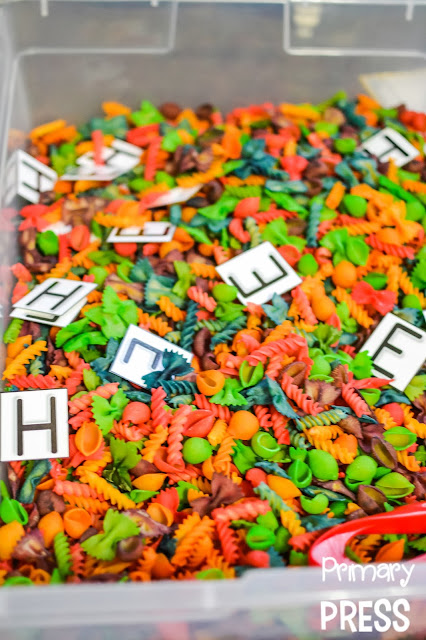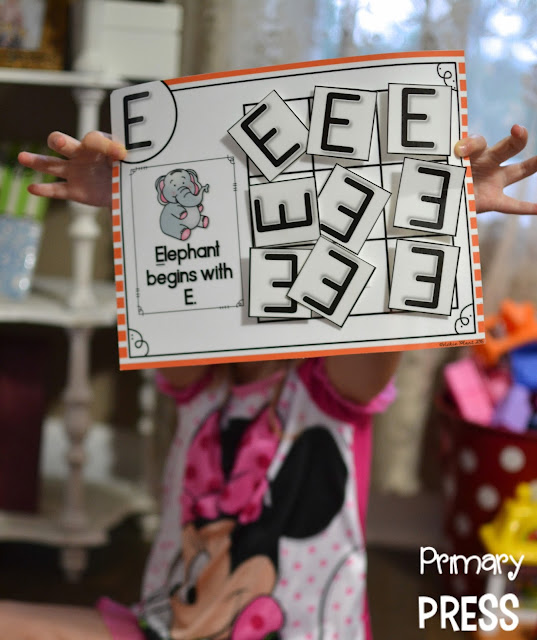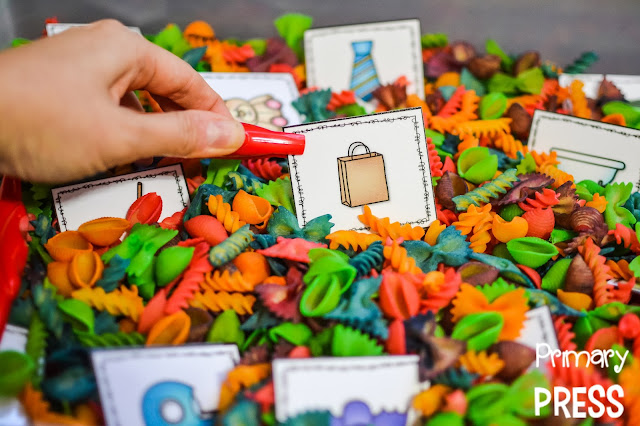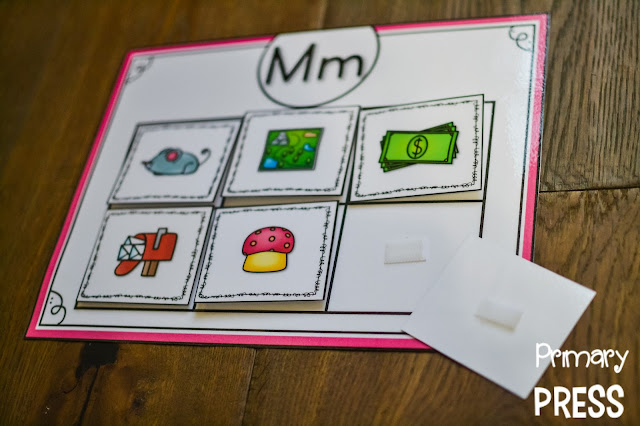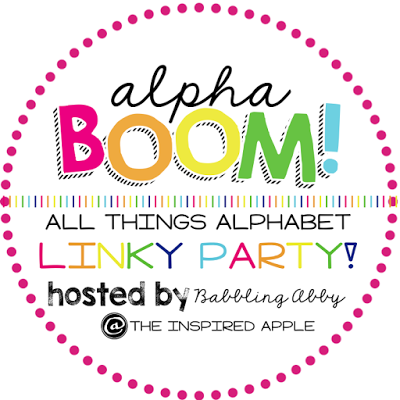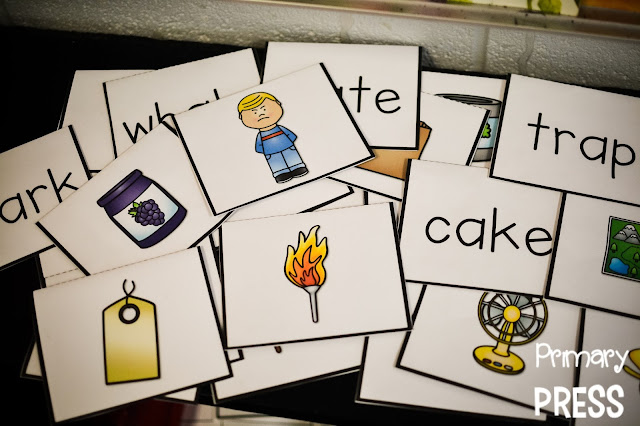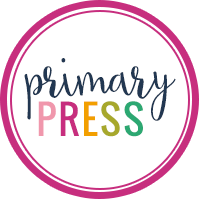Oh my word, friends! Can y'all believe back to school comes Monday for me?!? I may be freaking out just a little bit since I haven't really done much in my room this summer! However, I have had school on my mind lately, and I've been thinking a lot about the new babies I will get in just over a week. I always have a wide range of levels, especially with letter and sound knowledge. I get students that have never heard of a letter, students that are sounding and blending, and those in between. When I get home from my vacation this weekend, I will start working on all the resources I love to have handy for the beginning of the year and beyond to help my students work on letters and sounds.
Since I have students with such a range of phonics knowledge, I don't do a great deal of phonics instruction whole group. However, at the beginning of the year, I do more than usual. First, I always review this little chart every morning with my students. {You can grab it free here}
Another thing I do whole group is sorts. I love sorts so much! They are quick, low-prep, and such great formative assessment! Here is how we do letter sorts - as a group and individually. We also do beginning sound sorts, but sadly, I don't have a picture. {You can see more about there here}
Another easy activity for the beginning of the year that gives students exposure to words that begin with a letter, but also gives them cutting and gluing practice are these alphabet printables. I usually put them out for morning work the first month because after the first few, they require no directions!
As soon as I can after we start school, I like to get my kids into literacy centers {we call them workshops}, and there, they can work on skills specific to their needs. Some will need basic visual discrimination activities {you can read my post on that here}, some will need letter matching activities, some will need sound matching activities, and a few will need something a little more advanced. Here's a few of the beginning of the year centers I will use:
Visual Discrimination Alphabet Sensory Tub
Letter Matching Clips - this is so easy! Get paint stirrers, write uppercase letters on them, then write lowercase letters on clothespins, and the kids match! Letter practice and fine motor!
Letter Match - another super easy and cheap center is to buy notepads and write uppercase and lowercase letters on them, cut them down the middle, and have kids match them.
Beginning Sound Mats Sensory Tub
Now, the beginning of the year is not the only time we need letter and sound practice. For many of my students, it continues throughout the year. Here are more examples of various ways we practice letters and sounds throughout the year:
Matching letter cards to pictures that start with that letter
Rolling a die and covering a picture that begins with that letter
Pulling an uppercase letter card and coloring the corresponding lowercase letter
 Clipping a letter for the beginning sound of a word
Clipping a letter for the beginning sound of a word

Matching letters to beginning sound pictures with puzzles
For some of my students, letters and sounds practice in literacy centers continues long after Christmas. However, for the most part, my students have a pretty solid foundation by Christmas, which means lots of reading the second semester!
I hope to blog lots more about our alphabet activities once school starts and I have a new group of sweeties to teach! If you're looking for lots more alphabet activities, be sure to check out Abby's Alpha-Boom post from today!
Since I have students with such a range of phonics knowledge, I don't do a great deal of phonics instruction whole group. However, at the beginning of the year, I do more than usual. First, I always review this little chart every morning with my students. {You can grab it free here}
Another thing I do whole group is sorts. I love sorts so much! They are quick, low-prep, and such great formative assessment! Here is how we do letter sorts - as a group and individually. We also do beginning sound sorts, but sadly, I don't have a picture. {You can see more about there here}
Another easy activity for the beginning of the year that gives students exposure to words that begin with a letter, but also gives them cutting and gluing practice are these alphabet printables. I usually put them out for morning work the first month because after the first few, they require no directions!
As soon as I can after we start school, I like to get my kids into literacy centers {we call them workshops}, and there, they can work on skills specific to their needs. Some will need basic visual discrimination activities {you can read my post on that here}, some will need letter matching activities, some will need sound matching activities, and a few will need something a little more advanced. Here's a few of the beginning of the year centers I will use:
Visual Discrimination Alphabet Sensory Tub
Letter Matching Clips - this is so easy! Get paint stirrers, write uppercase letters on them, then write lowercase letters on clothespins, and the kids match! Letter practice and fine motor!
Letter Match - another super easy and cheap center is to buy notepads and write uppercase and lowercase letters on them, cut them down the middle, and have kids match them.
Beginning Sound Mats Sensory Tub
Now, the beginning of the year is not the only time we need letter and sound practice. For many of my students, it continues throughout the year. Here are more examples of various ways we practice letters and sounds throughout the year:
Matching letter cards to pictures that start with that letter
Rolling a die and covering a picture that begins with that letter
Pulling an uppercase letter card and coloring the corresponding lowercase letter


For some of my students, letters and sounds practice in literacy centers continues long after Christmas. However, for the most part, my students have a pretty solid foundation by Christmas, which means lots of reading the second semester!
I hope to blog lots more about our alphabet activities once school starts and I have a new group of sweeties to teach! If you're looking for lots more alphabet activities, be sure to check out Abby's Alpha-Boom post from today!






